How to Build an Emergency Survival Kit
Many folks out there simply don’t believe survival kits are all that essential. Even as they watch disaster after disaster play out on TV and in the news, they assure themselves, “Oh, that would never happen here.”
In reality, nothing could be further from the truth, as a bona fide survival situation can spring up literally anywhere, at any time. Consider the following emergency scenarios:
- Power grid failure
- Snow emergency / Ice storm
- Hurricane
- Tornado
- Tsunami
- Flood
- Earthquake
- Forest / Wildfire
- Nuclear plant explosion
- Chemical spill / leak
- Disease outbreak / pandemic
- Terrorist attack – bombs, biological attacks, etc.
- Massive solar flare (could knock out electrical systems – not unprecedented)
So again, where exactly are you safe from a potential survival situation? Well, unless you live in a cave, the answer is nowhere. Bottom line, you need a survival kit.
Building an Emergency Survival Kit
During a survival situation, you have to consider that many of the things you usually take for granted – electricity, heat, clean running water, access to fresh food, emergency medical services, and even reliable shelter – may be totally unavailable. If your locality is fortunate, the hardship will last hours rather than days or weeks. Either way, you’ll need to be equipped with some essential supplies to provide for yourself and your family until rescued, evacuated, or the emergency ends and order is restored. To that end, here’s a list of the most basic supplies any emergency survival kit should contain:
- Food – Non-perishable items, preferably canned or packaged foodstuffs that can be consumed with little to no additional preparation. Also consider infants and pets in regard to their unique nutritional needs.
- Water – Running water may be cut off or contaminated. The general rule of thumb is one gallon per day, per person. If you need to evacuate, carry as much bottled water as your party can comfortably transport.
- Fire starting tools – Fire is an absolute necessity in an emergency scenario. It can be used for so many things: cooking, heat, boiling water, sterilization, as a wild animal deterrent, and signaling. Matches and lighters will work in a pinch, but specialized fire starting tools are best in emergency situations.
- Flashlight with extra batteries – You could even go with an LED headlight, which is brighter, consumes less power, and can be more easily propped on a surface.
- Basic medical supplies – NSAIDs, bandages, rubbing alcohol, anti-biotic ointment, etc.
- Prescription medication – For those who must take prescription medication at regular intervals (i.e., insulin, heart medication), there should be an extra allotment for emergencies when access to a doctor’s office / hospital is cut off.
- Cell phones – With portable chargers and extra batteries.
- Personal care items – Including items for sanitation purposes.
- Multipurpose tool – The tool should have the basic multipurpose implements such as can opener, wrench, knife, pick, etc.
- Extra cash – ATM’s, banks, and POS machines may be closed or nonfunctional, and you might need cash to obtain essential emergency goods.
- Important documents and contact information – This will include ID’s, medication lists, deeds, insurance paperwork, passports, and emergency / relative phone numbers.
- Maps of the locality or region – The more detailed, the better.
- Additional clothing – Stock items that can be worn and removed in layers and are well-insulated.
Additional Tips
Remember the rule of threes: Three minutes without oxygen, three hours in extreme heat or cold, three days without water (less if in a hot climate or with increased physical activity), and three weeks without food. So be sure to set up your emergency survival kit based on these priorities.
Additionally, there are many more survival items you could stock, like garbage bags, work gloves, whistles, and water purification tablets/containers, for example. Your best bet is to evaluate your locality for its most likely disaster scenarios, and then stock your kit accordingly. Lastly, have “on the go” or “bug out” kits ready in a backpack for every able-bodied person who can carry one, in the event that you have to evacuate your location.
For more information on how to build an emergency survival kit, call LiveFireGear.com at (866) 506-7053 or shop Live Fire Gear’s store for emergency fire starters, kits and more.

















